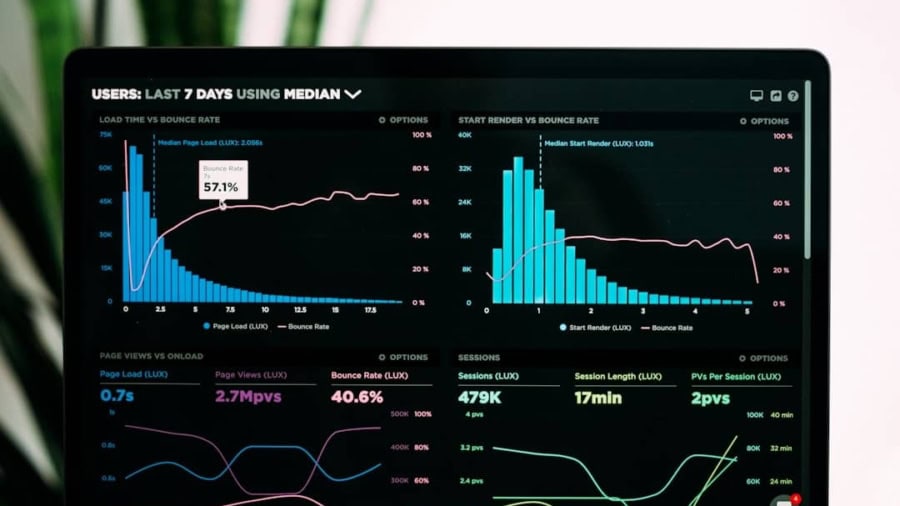In an era where time is often equated with money, the importance of effective time management cannot be overstated. As businesses and individuals strive to maximize productivity, the advent of artificial intelligence (AI) has ushered in a new wave of tools designed to enhance time tracking. AI-powered time trackers are revolutionizing the way we monitor and manage our time, offering insights and automation that traditional methods simply cannot match.
These innovative tools leverage machine learning algorithms and data analytics to provide users with a comprehensive understanding of how their time is spent, enabling them to make informed decisions about their work habits. The integration of AI into time tracking systems not only streamlines the process but also enhances accuracy. Traditional time tracking methods often rely on manual input, which can lead to errors and inconsistencies.
In contrast, AI-powered solutions can automatically log hours spent on various tasks, analyze patterns, and even suggest improvements. This shift from manual to automated tracking allows users to focus more on their work rather than on the mechanics of tracking it. As we delve deeper into the capabilities and advantages of these advanced tools, it becomes clear that AI-powered time trackers are not just a trend; they represent a significant evolution in how we approach productivity.
Key Takeaways
- AI-powered time trackers use artificial intelligence to automatically track and analyze how time is spent on tasks and projects.
- These trackers can improve productivity by providing insights into time management, identifying time-wasting activities, and optimizing workflow.
- Features of AI-powered time trackers include automatic time tracking, real-time analytics, project and task categorization, and integration with other tools.
- Benefits of using AI-powered time trackers include increased efficiency, accurate time tracking, better project management, and improved work-life balance.
- Integrating AI-powered time trackers into your workflow requires understanding the tool, setting clear goals, and ensuring team buy-in for successful implementation.
How AI-Powered Time Trackers Improve Productivity
AI-powered time trackers significantly enhance productivity by providing users with actionable insights into their work habits. By analyzing data over time, these tools can identify patterns in how individuals allocate their time across different tasks and projects. For instance, they can reveal that a user spends an excessive amount of time on emails or meetings, prompting them to reassess their priorities and make necessary adjustments.
This level of analysis empowers users to optimize their schedules, ensuring that they focus on high-impact activities that drive results. Moreover, AI-powered time trackers can automate repetitive tasks, further freeing up valuable time for users. For example, these tools can automatically categorize tasks based on user-defined parameters or even suggest optimal times for specific activities based on historical data.
This automation not only reduces the cognitive load associated with task management but also minimizes the risk of burnout by allowing users to maintain a balanced workload. As a result, individuals can achieve more in less time, leading to a more productive work environment.
Features of AI-Powered Time Trackers
The features of AI-powered time trackers are designed to cater to the diverse needs of users, making them versatile tools for both individuals and teams. One of the standout features is real-time tracking, which allows users to monitor their activities as they happen. This capability ensures that no minute goes unaccounted for, providing a detailed overview of how time is spent throughout the day.
Additionally, many AI-powered trackers offer integrations with popular productivity tools and platforms, enabling seamless data sharing and collaboration. Another notable feature is the use of predictive analytics. By leveraging historical data, these trackers can forecast future productivity trends and suggest adjustments to improve efficiency.
For instance, if a user consistently struggles with completing tasks during certain hours, the tracker may recommend shifting those activities to a different time when they are more focused and energized. Furthermore, many AI-powered time trackers include customizable dashboards that allow users to visualize their data in meaningful ways, making it easier to identify areas for improvement and track progress over time.
Benefits of Using AI-Powered Time Trackers
The benefits of utilizing AI-powered time trackers extend beyond mere efficiency; they encompass a holistic approach to productivity enhancement. One significant advantage is the ability to gain deeper insights into work patterns. Users can analyze their performance metrics over days, weeks, or months, allowing them to identify trends and make data-driven decisions about their work habits.
This level of insight fosters a culture of continuous improvement, where individuals are encouraged to refine their processes and strive for greater efficiency. Additionally, AI-powered time trackers can contribute to improved work-life balance. By providing users with a clear picture of how their time is allocated, these tools can help individuals set boundaries and prioritize personal time alongside professional responsibilities.
For example, if a user notices that they are consistently working late hours, they can take proactive steps to adjust their schedule and ensure they have adequate downtime. This balance is crucial for maintaining overall well-being and preventing burnout in an increasingly demanding work environment.
Integrating AI-Powered Time Trackers into Your Workflow
Integrating AI-powered time trackers into your existing workflow may seem daunting at first, but the process can be straightforward with the right approach. The first step is to select a tracker that aligns with your specific needs and preferences. Consider factors such as ease of use, compatibility with other tools you already use, and the features that are most important to you.
Once you have chosen a tool, take the time to familiarize yourself with its functionalities through tutorials or user guides. After familiarization, begin by setting clear goals for what you want to achieve with the tracker. Whether it’s reducing time spent on low-priority tasks or increasing focus during peak hours, having defined objectives will guide your usage of the tool.
Start by tracking your activities consistently for a few weeks to gather sufficient data for analysis. As you begin to see patterns emerge, use the insights gained to make informed adjustments to your workflow. Over time, this integration will become second nature, leading to enhanced productivity and a more organized approach to managing your time.
Overcoming Challenges with AI-Powered Time Trackers
While AI-powered time trackers offer numerous advantages, users may encounter challenges during implementation and usage. One common hurdle is resistance to change; individuals accustomed to traditional methods may find it difficult to adapt to new technology. To overcome this challenge, it’s essential to emphasize the benefits of using an AI-powered tracker and provide adequate training and support during the transition period.
Encouraging open communication about any concerns or difficulties can also foster a more positive attitude toward adopting new tools. Another challenge lies in data privacy and security concerns. As these trackers collect sensitive information about work habits and productivity patterns, users may worry about how their data is stored and utilized.
To address these concerns, it’s crucial to choose reputable software providers that prioritize data security and transparency. Familiarize yourself with the privacy policies of the chosen tool and ensure that it complies with relevant regulations. By taking these precautions, users can feel more confident in leveraging AI-powered time trackers without compromising their privacy.
Tips for Making the Most of AI-Powered Time Trackers
To fully harness the potential of AI-powered time trackers, users should adopt certain best practices that enhance their effectiveness. First and foremost, consistency is key; regularly logging activities ensures that the data collected is accurate and comprehensive. Set aside specific times each day or week dedicated solely to reviewing your tracked data and reflecting on your productivity patterns.
This practice will help you stay accountable and make informed decisions based on real-time insights. Additionally, take advantage of the customization options available within many AI-powered trackers. Tailoring settings such as task categories or notification preferences can significantly enhance your experience and ensure that the tool aligns with your unique workflow.
Furthermore, don’t hesitate to explore advanced features like goal setting or project tracking; these functionalities can provide additional layers of insight into your productivity journey. By actively engaging with the tool and adapting it to your needs, you’ll be better positioned to achieve your productivity goals.
The Future of AI-Powered Time Tracking
As we look ahead, it is evident that AI-powered time tracking will continue to evolve and play an increasingly vital role in enhancing productivity across various sectors. The integration of advanced technologies such as machine learning and natural language processing will likely lead to even more sophisticated tracking solutions capable of providing deeper insights and more personalized recommendations. As organizations recognize the value of data-driven decision-making in optimizing workflows, the demand for these innovative tools will only grow.
In conclusion, embracing AI-powered time trackers represents not just an opportunity for improved efficiency but also a pathway toward achieving a healthier work-life balance. By leveraging these advanced tools effectively, individuals and teams can unlock their full potential while navigating the complexities of modern work environments. As technology continues to advance, those who adapt will find themselves at the forefront of productivity innovation, ready to tackle new challenges with confidence and clarity.
If you’re interested in utilizing technology to enhance your productivity, you may also want to check out this article on the best software for literature review. Just like AI-powered time trackers can help you stay focused, the right software for literature review can streamline your research process and improve your efficiency. By leveraging the power of technology, you can optimize your workflow and achieve better results in less time.
FAQs
What is an AI-powered time tracker?
An AI-powered time tracker is a software tool that uses artificial intelligence to automatically track and analyze how you spend your time. It can categorize activities, provide insights into productivity patterns, and help you stay focused on your tasks.
How does an AI-powered time tracker help you stay focused?
An AI-powered time tracker helps you stay focused by providing real-time feedback on your productivity, identifying time-wasting activities, and offering suggestions for improving time management. It can also send reminders and notifications to keep you on track with your goals.
What are the benefits of using an AI-powered time tracker?
Some benefits of using an AI-powered time tracker include improved productivity, better time management, increased awareness of how time is spent, and the ability to make data-driven decisions about how to allocate time and resources.
How does AI technology improve time tracking?
AI technology improves time tracking by automating the process of categorizing and analyzing time data, identifying patterns and trends in productivity, and providing personalized recommendations for optimizing time management based on individual work habits and preferences.
Are there any privacy concerns with using AI-powered time trackers?
Privacy concerns may arise when using AI-powered time trackers, as they collect and analyze data about how individuals spend their time. It’s important to choose a reputable time tracking tool that prioritizes data security and offers transparent policies about how user data is handled and protected.



